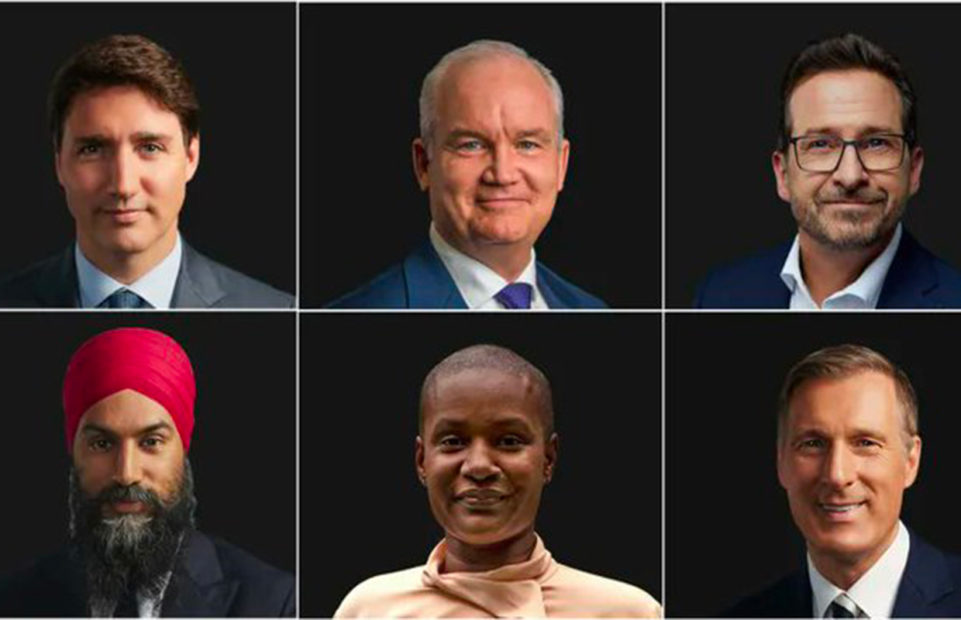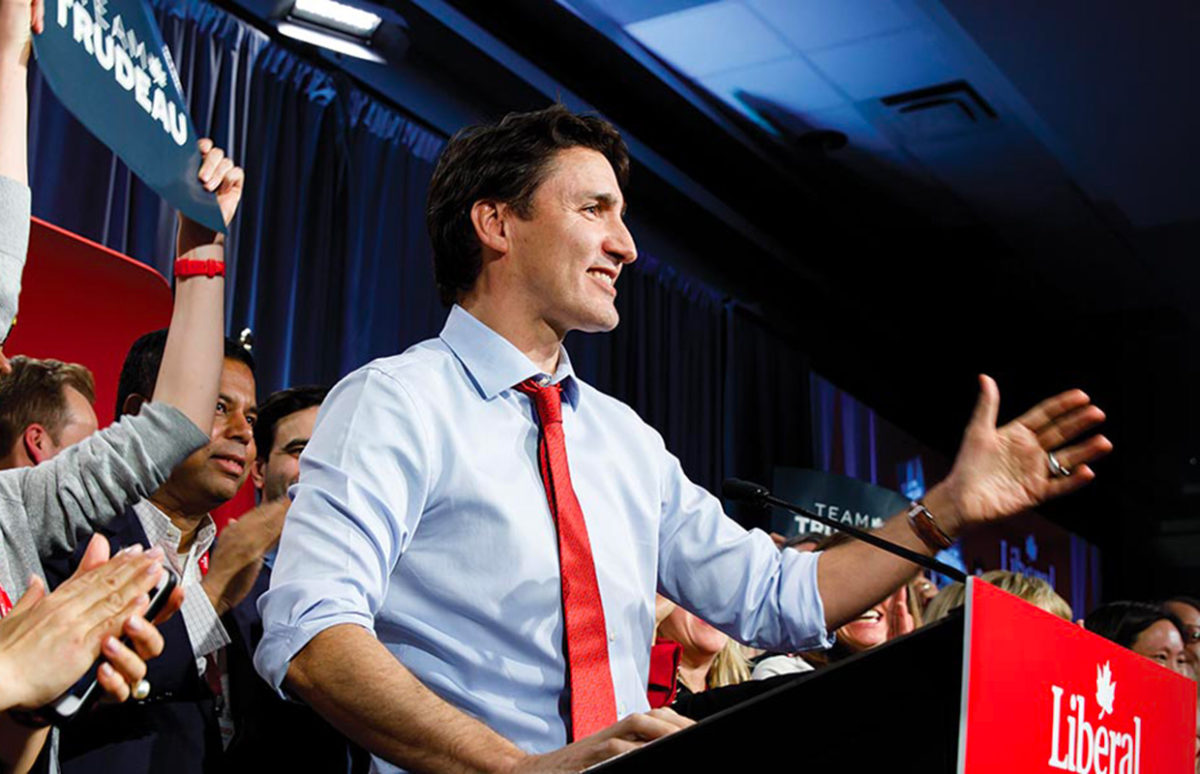Canada went to the polls two years early on 20 September. The situation after the election looks almost exactly the same as that before, with Prime Minister Justin Trudeau’s Liberal Party losing the popular vote but winning the most seats, though not enough for a majority. Trudeau will now form another minority government.
Justin Trudeau, Prime Minister and Liberal Party leader, called a snap election on 15 August, with polling day set for 20 September.
The Liberal Party leader was only two years into a four-year second mandate, but hoped he could obtain a majority since opinion polls were good. (Do we hear “Theresa May” here?) He justified the early election saying Canadians should have a say in the country’s plans for recovery after COVID. Critics said holding an unscheduled/unnecessary election when the country was facing its fourth wave of COVID was irresponsible.
The Liberals came to power in 2015, on a wave of personal popularity for Trudeau and with a comfortable majority. But In 2019, after a series of scandals, the Liberals had to form a minority government after a general election. This is a relatively common occurrence in the Canadian House of Commons. If no party holds a majority after an election, the outgoing government is asked to form an administration even if they don’t have the most seats.
In August, the Liberals seemed set to regain their majority but their lead rapidly eroded. Their proposal to bring in COVID mandates (like vaccine passports) and compulsory vaccination for civil servants proved controversial.

Opposition
The main opposition, the Conservative Party had a good campaign. Its leader, Erin O’Toole, was leading his first election campaign, having become leader less than two years ago. He and Trudeau are similar ages (48 and 49) and like Trudeau he projects a “family man” image, referring to his wife and two children. Unlike Trudeau, he has not made his entire career in politics. He was a navigator in the Royal Canadian Airforce and then a corporate lawyer before entering parliament.
O’Toole was chosen as his party’s leader on a pretty classic conservative platform. His slogan was “Take Back Canada”, which sounded pretty similar to one from south of the border. He had policies that were pro-guns and anti- carbon tax. But in this campaign, he has swung distinctly left, at least on social issues, saying he supports LGBT rights and women’s right to choose to have an abortion. He has promised additional benefits for low-income Canadians and protection for workers in the “gig economy”.
To the left of the Liberals is the New Democratic Party (NDP), led by Jagmeet Singh, the third power in parliament and the most likely coalition partner in a minority government.
And to the right of the Conservatives is one of those populist parties that have been springing up around the world: the People’s Party of Canada. It seems to have increased its overall vote tally to 5% from 1.6% but not taken any seats.
The Bloc Quebecois, the separatist Quebec party that only contests seats in the French-speaking province, is forecast to have gained two seats.
In the outgoing parliament, the Liberals held 155 seats, the Conservatives 119, the Bloc Quebecois held 32, the NDC 24, Independents 5, the Greens 2 and one seat was vacant.
36 days and $600 million later, the new parliament is likely to look much the same.
Did You Know?
The Canadian parliamentary system was inherited from the British, with some differences.
| Canada | UK | |
| Population | 38 million | 65 million |
| Head of state | Queen Elizabeth II (represented by the Governor General) | Queen Elizabeth II |
| Head of Government | Prime Minister (Justin Trudeau, Liberal) | Prime Minister (Boris Johnson, Conservative) |
| Parliament | Known as the Centre Bloc, in Ottawa | Known as Westminster, in London |
| Appointed upper house | Senate | House of Lords |
| Elected lower house | House of Commons | House of Commons |
| Elected members | 338 Members of Parliament (MPs) represent ridings. | 650 Members of Parliament (MPs) represent constituencies. |





